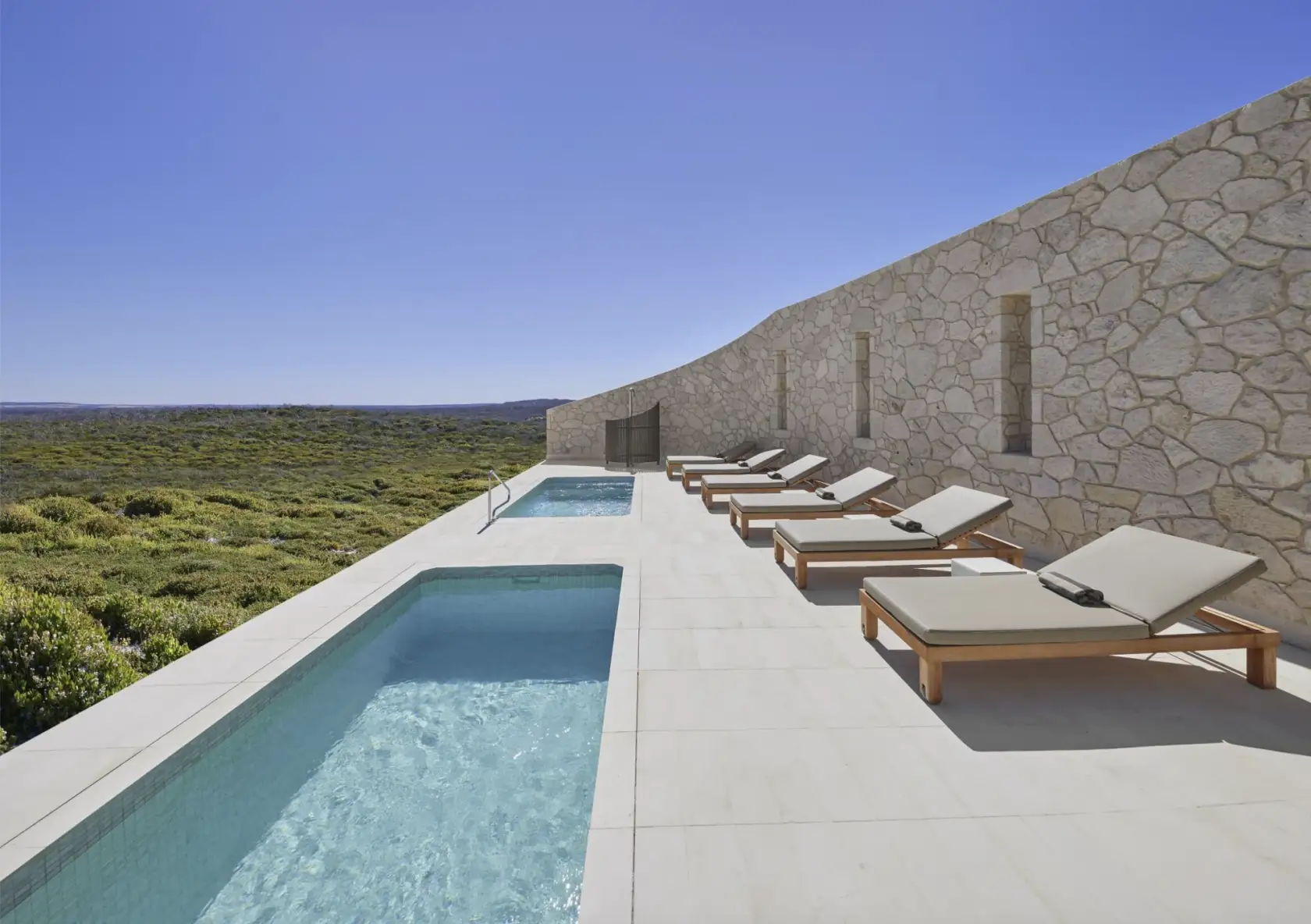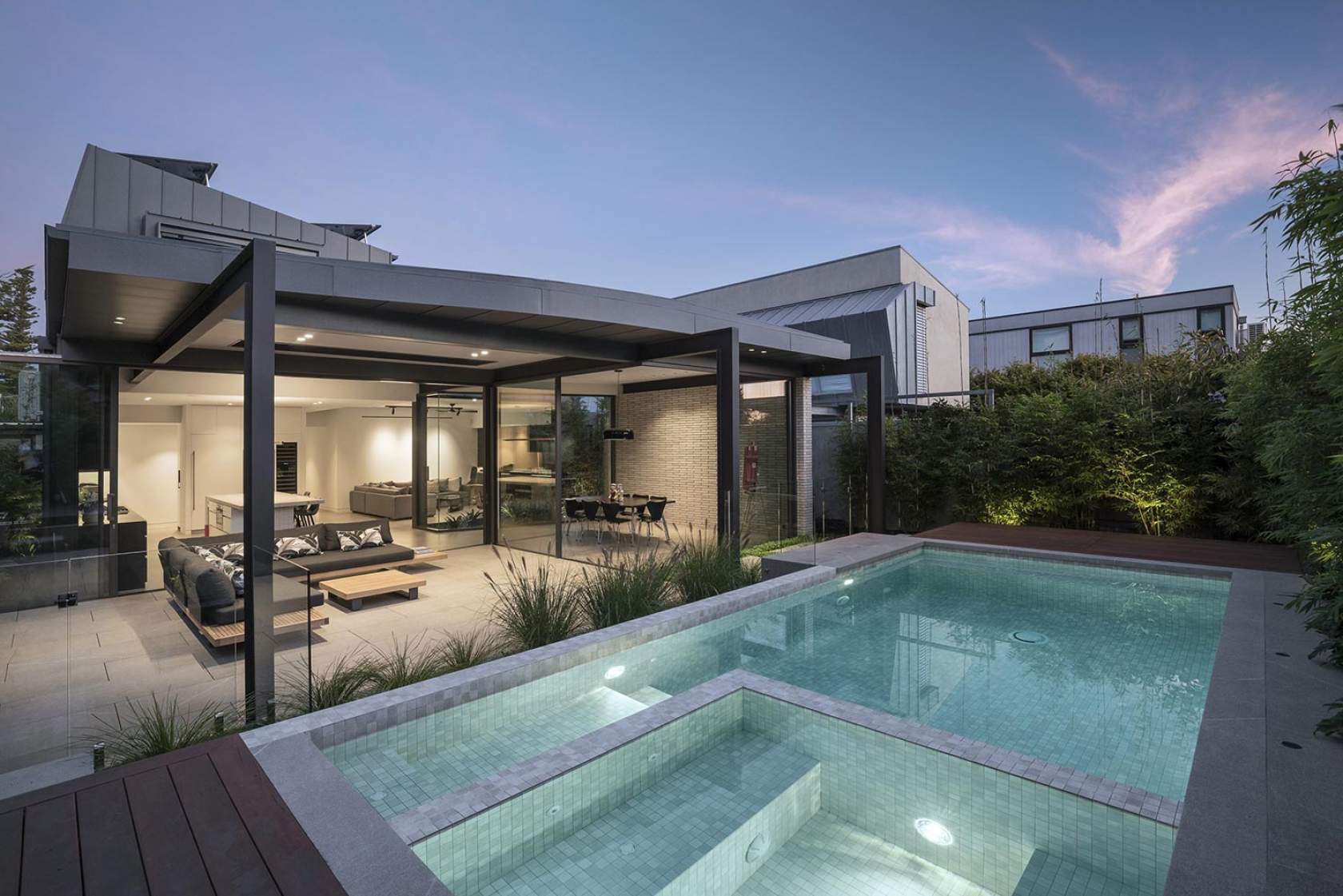

Why water balance matters
A properly chemically balanced pool provides a healthy environment for your family and friends. Leaving water untreated can lead to a less than enjoyable swimming experience and potentially risk damage to your pool. As with most things, the most important factor to maximising the life and appearance of your swimming pool is prevention. Three main variables in swimming pool water chemistry need to be maintained to achieve balance: pH, total alkalinity and calcium hardness.
pH
pH is a measurement of the acidity or alkalinity of a solution — in this case, the pool water. The pH scale ranges from 0–14 with 7.0 representing a neutral state. Values below 7.0 are acidic and above 7.0 are alkaline. The pH level in pool water needs to be kept within the optimum range to support:
the pool shell, interior finish, pipes and operational equipment
the comfort of pool users
the water sanitisation effectiveness
Australian standard AS3633 Private Swimming Pools - Water Quality, defines the pH operating range for swimming pool water as between 7.0 and 7.8, with a recommended range of between 7.2 and 7.6 for pools constructed from concrete. In the case of fibreglass pools, SPASA recommends maintaining a pH level of between 7.0 and 7.2, but optimum levels for fibreglass and some interior finishes may vary, so this should be confirmed with your installer or pool shop.
Many things cause variation in the pH level including manually topping up your pool to compensate for evaporation, heavy rainfall, more frequent usage or a large number of pool users (commonly referred to as a heavy bather load) and the addition of chemical products like chlorine.
When pH is low, the water is more acidic. For swimmers, that typically means stinging red eyes and itchy skin, while it can also cause increased bleaching of swimwear. The water suffers too, changing from a clear sparkling blue to a murky colour, requiring more chemicals to balance and adding unnecessary cost. Acidic water can also impact pool pumps and other equipment as it causes corrosion and shortens service life. It’s also not great for interior finishes, as it may cause imperfections on the surface which can subsequently encourage algae growth.
A high pH level means water is more alkaline. The addition of chlorine stabiliser or a sudden rise in water temperature can both contribute to raised pH levels. Alkaline water is ‘softer’ than neutral or acidic water, which dries out the skin and can cause eye irritations. It also limits the effectiveness of sanitisers. The quickest and easiest method to correct this is to add muriatic acid, otherwise known as hydrochloric acid.
The effect of pH on chlorine
Effective sanitation relies on maintaining optimal pH levels and should be monitored frequently. Regardless of the chlorine format and chlorination process you use, any pH drift above the Australian standard recommended range (7.0 to 7.8) will inhibit sanitising capability. This may be noticed when attempting to clear your pool and water testing records a high level of chlorine, yet the water is not clear. In this instance, it’s probable that the pH level is high and restricting the chlorine from effectively creating crystal clear water.
Total Alkalinity
Total alkalinity (TA) is a measure of the total concentration of bases (carbonates, bicarbonates and some hydroxides) and total dissolved solids (TDS) in water. TDS includes minerals that separate out of pool chemicals, along with dust, skin oils, sunscreen particles — any solids released into the pool water. TA is expressed in parts per million (ppm) or milligrams per litre (mg/l).
The AS3633 Standard recommends a TA range between 60 and 200 ppm. Your pool builder, service technician or pool shop can provide a more definitive recommendation based on the specifics of your pool.
Low TA causes pH levels to become unstable, meaning that small chemical additions will result in increased pH level shifts — a state known as ‘pH bounce’.
Total alkalinity can be altered in the following ways:
The addition of a buffer will raise the TA. A buffer is a chemical addition (sodium bicarbonate) which will minimise rapid pH level fluctuation (pH bounce) that occurs when acid or base products are added to the water.
The addition of an acid, such as hydrochloric acid* or sodium bisulfate, will lower both pH and TA.
Topping up the pool water will alter the TA, with the direction being determined by the TA of the top-up water itself.
The relationship between pH and TA
As the addition of acid lowers both pH and TA, there is an interconnection between these two compounds. For this reason, they need to be adjusted together, factoring in the effect one has on the other.
Hypothetically, you have a concrete pool and are seeking to maintain a pH level of 7.2 to 7.6 and TA of 100 to 120 ppm (varies — check with your local SPASA Australia member). You’ve checked the pH level and found it is within range, but the TA reading is low.
You need to add a buffer to raise the TA level at the optimal rate. However, because the buffer is an alkali, it will additionally raise the pH level. The addition of an acid to counter that and lower the pH level will also lower the TA. the solution to this issue is to raise the TA to an artificially high level. This ensures that when acid is added to lower the pH, the corresponding TA reduction falls within the target range.
*Safety note: Hydrochloric acid must always be diluted — one-part acid to 10 parts water — before being added to pool water. Follow best practice and always add acid to water, never the other way around.
Calcium Hardness
In simple terms, calcium hardness is a measurement of the dissolved calcium in your pool water. Referring to AS3633, the recommended range for a domestic swimming pool is between 80 and 500 ppm.
Calcium hardness must be in harmony with pH and TA to prevent damage. Low levels make the water corrosive to both the pool and equipment, whereas high levels lead to scale formation.
Standard pool water test kits can’t be used to measure calcium hardness, so you’ll need to take a water sample to your pool shop for testing. It’s worth noting the use of calcium hypochlorite (a form of granular chlorine) for sanitisation will increase calcium hardness levels, necessitating more frequent testing and adjustment.
A final word of advice
Each pool’s environment is unique and may take some calibration to achieve water balance. Maintaining water balance should be simple and cost-effective, though it can be a process of trial and error. We suggest initially adding chemicals in small volumes, running the filter and testing the effect after several hours. Attempting to affect large level changes using high chemical volumes can have the opposite effect of your intended outcome, potentially causing unnecessary complications and damage to your pool and equipment.
If you are in doubt, you should always err on the side of caution and consult a SPASA accredited pool professional, who can not only provide peace of mind and assist in water balancing, but also provide guidance on the optimal level targets specific to your pool.
